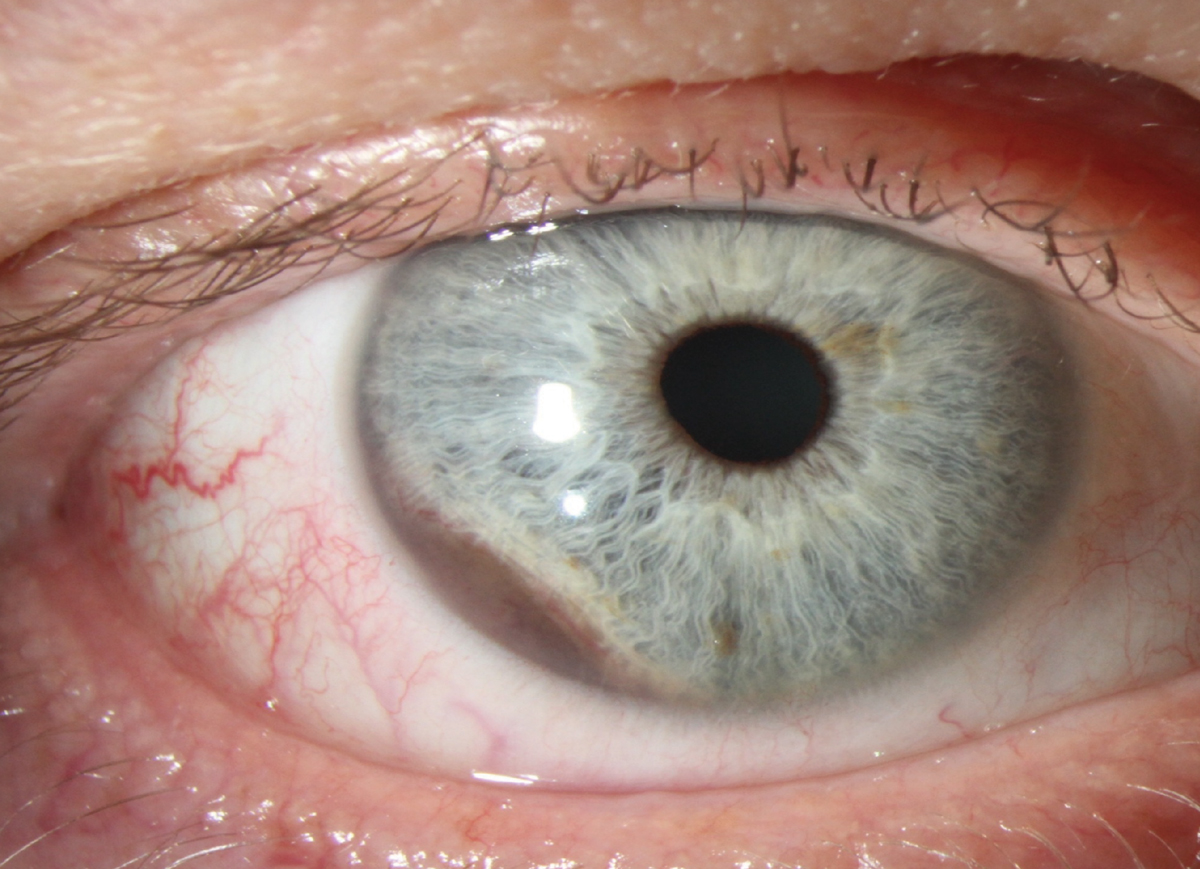 |
| Pediatric patients with conjunctival and choroidal/ciliary body melanoma may have higher mortality rates. Photo: Jerome Sherman, OD. Click image to enlarge. |
Though rare in children, ocular melanoma can have devastating consequences. To gain more insight into these malignant conditions, researchers conducted a meta-analysis of pediatric patients diagnosed with various types of ocular melanoma at age 12 or younger. Studies included in the analysis included case reports or series, and unpublished cases and records from international ocular oncology centers. The group’s findings, published in children in the Journal of the American Association for Pediatric Ophthalmology and Strabismus, indicated that ocular melanoma is indeed rare in children, but these malignancies have different outcomes.
The retrospective study included 133 eyes of 133 children with choroidal or ciliary body (50%), iris (25%), conjunctival (19%) and eyelid (6%) melanoma. Average age at presentation was seven years. The frequency of ocular melanoma family history didn’t vary by tumor site. The table below summarizes additional significant study findings:
| Tumor site | |||
N=133 | Choroidal or ciliary body (n=66) | Iris (n=33) | Conjunctival (n=26) | Eyelid (n=8) |
Mean age (years) | 6.5 | 7.44 | 9.12 | 5.63 |
Ocular melanocytosis association | 15% | 11% | 4% | 0% |
Metastasis at mean follow up | 12% at 74 months | 9% at 85 months | 19% at 50 months | 13% at 105 months |
Death | 5% | 3% | 8% | 0% |
The researchers reported that 39% of choroidal or ciliary body melanoma cases were in boys. “We suspect this may reflect more girls reaching puberty before 12 years of age,” they wrote in their paper, since puberty is associated with increased uveal melanoma prevalence. Additionally, of the uveal melanoma cases, 27% were ciliary body melanoma and 33% were iris melanoma. Ocular melanocytosis is a predisposing factor (associated with 5.6 times greater mortality). Patients with iris melanoma in the study had elevated intraocular pressure and angle invasion.
Conjunctival melanoma is rare, and little is known about its clinical features in relation to age. The researchers weren’t able to conclude whether prevalence was higher in children with ocular melanoma than in adults due to heterogeneity of the data and small sample size, and possibly because children undergo dilated fundus exams less often. “Conjunctival melanomas in children may be disproportionately more likely to be detected than choroidal lesions,” they noted in their paper. They added that 90% of these children had no noted precursor lesions. All deaths in this group had de novo tumor origin.
Eyelid melanoma is the rarest of ocular melanomas. As in adults, the lower lid was the most common (87%) lesion location. Ulceration is reported in up to 25% of adults but was seen in only one case in this study. Only one patient in this study had lymph node involvement (vs. 5% of reported adult cases). “It seems that local resection is sufficient with relatively good prognosis in most cases for all age groups,” the researchers wrote.
Based on these meta-analysis findings, the researchers concluded that ocular melanoma in children is rare and clinical features and outcomes vary significantly.
Masoomian B, Dalvin LA, Esfahani HR, et al. Pediatric ocular melanoma: a collaborative multicenter study and meta-analysis. Journal of AAPOS 2023. [Epub ahead of print]. |

